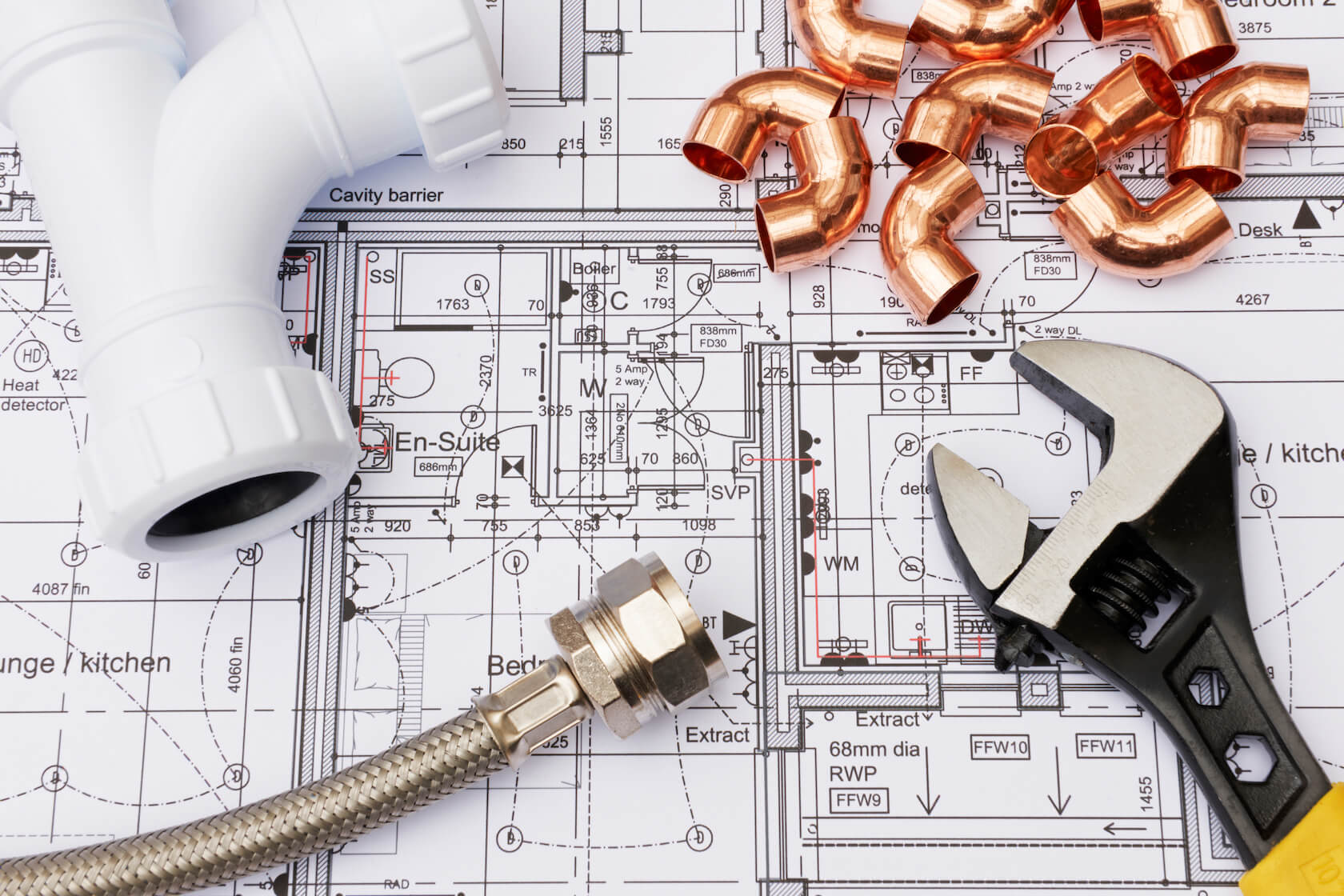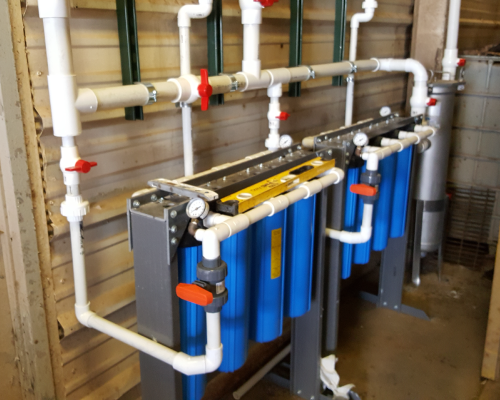Key Information About Your House's Plumbing System Anatomy
Key Information About Your House's Plumbing System Anatomy
Blog Article
The content further down relating to Anatomy of a House: Understanding the Components is relatively insightful. Don't bypass it.

Recognizing just how your home's pipes system functions is crucial for every house owner. From providing tidy water for drinking, cooking, and showering to safely getting rid of wastewater, a well-maintained plumbing system is important for your family members's wellness and convenience. In this thorough overview, we'll discover the elaborate network that composes your home's pipes and deal suggestions on upkeep, upgrades, and handling typical concerns.
Introduction
Your home's plumbing system is greater than simply a network of pipelines; it's an intricate system that guarantees you have access to clean water and reliable wastewater elimination. Knowing its elements and exactly how they interact can aid you avoid pricey repairs and ensure everything runs smoothly.
Fundamental Parts of a Plumbing System
Pipes and Tubing
At the heart of your pipes system are the pipes and tubing that bring water throughout your home. These can be constructed from numerous materials such as copper, PVC, or PEX, each with its advantages in regards to toughness and cost-effectiveness.
Fixtures: Sinks, Toilets, Showers, and so on.
Components like sinks, commodes, showers, and bathtubs are where water is used in your house. Understanding exactly how these components link to the plumbing system aids in detecting issues and intending upgrades.
Valves and Shut-off Points
Valves manage the flow of water in your plumbing system. Shut-off shutoffs are crucial during emergency situations or when you require to make fixings, permitting you to isolate parts of the system without disrupting water flow to the entire home.
Water System System
Key Water Line
The primary water line links your home to the local supply of water or an exclusive well. It's where water enters your home and is dispersed to different components.
Water Meter and Pressure Regulatory Authority
The water meter steps your water use, while a pressure regulator makes certain that water streams at a safe stress throughout your home's pipes system, avoiding damages to pipelines and components.
Cold Water vs. Warm water Lines
Comprehending the distinction in between cold water lines, which provide water directly from the primary, and warm water lines, which lug warmed water from the water heater, assists in fixing and preparing for upgrades.
Water drainage System
Drain Pipes Water Lines and Traps
Drain pipelines bring wastewater away from sinks, showers, and commodes to the sewage system or septic tank. Catches protect against sewage system gases from entering your home and additionally catch debris that can create blockages.
Air flow Pipelines
Ventilation pipelines allow air into the water drainage system, stopping suction that can reduce drainage and trigger catches to empty. Appropriate air flow is essential for preserving the honesty of your plumbing system.
Significance of Correct Water Drainage
Making certain proper drain avoids back-ups and water damages. Regularly cleaning up drains pipes and keeping catches can prevent expensive repair services and expand the life of your pipes system.
Water Heating Unit
Kinds Of Water Heaters
Hot water heater can be tankless or traditional tank-style. Tankless heating units warm water as needed, while containers save warmed water for immediate use.
How Water Heaters Attach to the Pipes System
Recognizing how water heaters connect to both the cold water supply and warm water distribution lines assists in identifying problems like not enough warm water or leakages.
Upkeep Tips for Water Heaters
Consistently purging your hot water heater to get rid of debris, examining the temperature level setups, and evaluating for leaks can expand its life-span and boost power performance.
Common Plumbing Issues
Leaks and Their Reasons
Leaks can occur as a result of maturing pipelines, loose fittings, or high water stress. Attending to leaks promptly prevents water damages and mold and mildew development.
Obstructions and Clogs
Blockages in drains and commodes are usually brought on by purging non-flushable products or an accumulation of oil and hair. Utilizing drain screens and being mindful of what drops your drains pipes can avoid clogs.
Signs of Pipes Issues to Look For
Low water stress, sluggish drains, foul odors, or abnormally high water bills are indicators of prospective plumbing troubles that must be dealt with without delay.
Pipes Maintenance Tips
Regular Inspections and Checks
Schedule annual pipes examinations to capture issues early. Try to find indications of leaks, rust, or mineral buildup in faucets and showerheads.
DIY Upkeep Tasks
Straightforward jobs like cleaning faucet aerators, checking for toilet leakages using color tablet computers, or insulating exposed pipes in cold climates can protect against significant plumbing issues.
When to Call a Professional Plumber
Know when a pipes problem needs professional know-how. Attempting intricate repair services without proper expertise can cause more damages and greater repair work costs.
Updating Your Plumbing System
Factors for Upgrading
Updating to water-efficient components or changing old pipes can boost water high quality, reduce water costs, and enhance the value of your home.
Modern Pipes Technologies and Their Benefits
Discover innovations like smart leakage detectors, water-saving bathrooms, and energy-efficient water heaters that can conserve money and decrease environmental impact.
Expense Considerations and ROI
Compute the in advance prices versus long-lasting savings when thinking about plumbing upgrades. Several upgrades pay for themselves via decreased energy bills and fewer fixings.
Environmental Influence and Conservation
Water-Saving Components and Devices
Installing low-flow taps, showerheads, and toilets can dramatically reduce water usage without giving up performance.
Tips for Lowering Water Usage
Easy routines like fixing leakages promptly, taking much shorter showers, and running full tons of washing and recipes can save water and lower your energy bills.
Eco-Friendly Plumbing Options
Consider lasting plumbing materials like bamboo for floor covering, which is durable and environmentally friendly, or recycled glass for countertops.
Emergency Readiness
Steps to Take During a Pipes Emergency situation
Know where your shut-off valves lie and just how to turn off the water system in case of a ruptured pipeline or major leak.
Importance of Having Emergency Calls Convenient
Maintain call details for neighborhood plumbing professionals or emergency situation solutions conveniently offered for fast feedback during a plumbing crisis.
Do It Yourself Emergency Situation Fixes (When Relevant).
Short-term repairs like using air duct tape to spot a dripping pipeline or putting a container under a leaking faucet can minimize damages up until an expert plumbing technician shows up.
Final thought.
Recognizing the makeup of your home's plumbing system empowers you to maintain it effectively, conserving money and time on repair work. By following regular upkeep regimens and remaining informed about modern-day pipes modern technologies, you can guarantee your plumbing system operates successfully for several years to find.
Understanding Your Home Plumbing System: A Comprehensive Guide
Plumbing System: The Lifeline of Your Home
At its core, the plumbing system is designed to perform two primary functions: bring fresh water into your home and remove wastewater. The system is a network of pipes, fixtures, and other components that transport water and sewage. Residential plumbing systems include potable water supply lines, drain-waste-vent (DWV) systems, and various plumbing fixtures that make water use in daily tasks possible.
Key Components:
Water Supply: This part of your plumbing system brings municipal water into your home, passing through the main water supply line. It s responsible for supplying all water needs, from drinking to bathing.
Drainage System: It carries waste and water away from your home to the sewer or septic system. This system includes all the piping within your home that leads to external sewage or septic systems.
Vent System: An essential yet often overlooked component, the vent system allows sewer gases to escape and lets air into the drainpipes, ensuring water and waste move correctly through the system.
Fixture: More Than Just Taps and Toilets
Plumbing fixtures are the most interactive parts of the plumbing system, including faucets, showers, toilets, and sinks. Each fixture is connected to the plumbing system and plays a role in either the delivery of freshwater or the disposal of waste and wastewater.
Types of Fixtures:
Faucets and Sinks: Used for washing hands, dishes, and other daily water needs.
Toilets: Dispose of human waste through the sewage system.
Bathtubs and Showers: Provide bathing facilities, requiring both hot and cold water supply.
Water Supply: The Source of Life
The water supply system is a critical component, ensuring that potable water is available throughout your home for various uses, including drinking, cooking, and cleaning. This system consists of pipes that distribute water to different parts of the house, controlled by valves to regulate the water flow.
Types of Plumbing: Materials and Methods
Various types of plumbing systems and materials are used in residential settings, each with its advantages and applications. From copper and PVC pipes for water supply to cast iron and ABS for drainage, the choice of materials can impact the longevity and efficiency of your plumbing system.
https://intownplumbingtx.com/articles/home-plumbing-system-guide/

Understanding Your Home Plumbing System: A Comprehensive Guide
Plumbing System: The Lifeline of Your Home
At its core, the plumbing system is designed to perform two primary functions: bring fresh water into your home and remove wastewater. The system is a network of pipes, fixtures, and other components that transport water and sewage. Residential plumbing systems include potable water supply lines, drain-waste-vent (DWV) systems, and various plumbing fixtures that make water use in daily tasks possible.
Key Components:
Water Supply: This part of your plumbing system brings municipal water into your home, passing through the main water supply line. It s responsible for supplying all water needs, from drinking to bathing.
Drainage System: It carries waste and water away from your home to the sewer or septic system. This system includes all the piping within your home that leads to external sewage or septic systems.
Vent System: An essential yet often overlooked component, the vent system allows sewer gases to escape and lets air into the drainpipes, ensuring water and waste move correctly through the system.
Fixture: More Than Just Taps and Toilets
Plumbing fixtures are the most interactive parts of the plumbing system, including faucets, showers, toilets, and sinks. Each fixture is connected to the plumbing system and plays a role in either the delivery of freshwater or the disposal of waste and wastewater.
Types of Fixtures:
Water Supply: The Source of Life
The water supply system is a critical component, ensuring that potable water is available throughout your home for various uses, including drinking, cooking, and cleaning. This system consists of pipes that distribute water to different parts of the house, controlled by valves to regulate the water flow.
Types of Plumbing: Materials and Methods
Various types of plumbing systems and materials are used in residential settings, each with its advantages and applications. From copper and PVC pipes for water supply to cast iron and ABS for drainage, the choice of materials can impact the longevity and efficiency of your plumbing system.
https://intownplumbingtx.com/articles/home-plumbing-system-guide/
I'm just very involved in Anatomy of a House: Understanding the Components and I am praying you enjoyed reading my entry. For those who enjoyed our blog entry kindly consider to share it. Thanks for going through it.
Book A Service Call Report this page